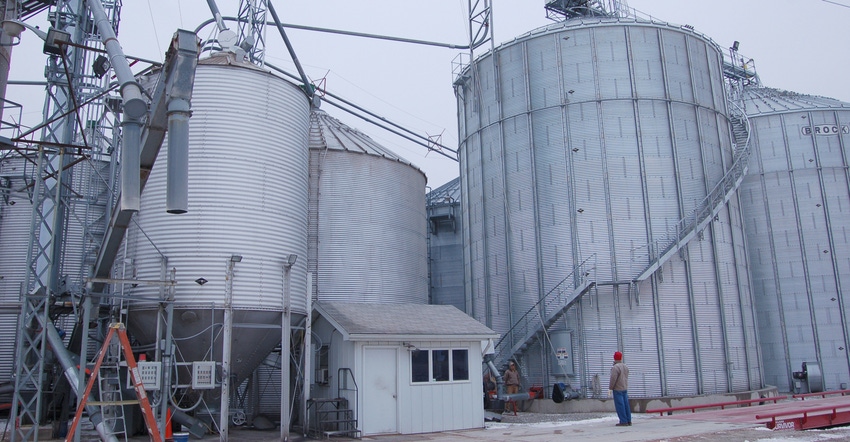
A father and son entered a grain bin the day after a fire in the bin burned itself out. Both went in, but neither made it out alive. They succumbed to carbon monoxide poisoning. Officials reported that even the day after the fatalities, carbon monoxide levels read 500 parts per million inside the bin. A carbon monoxide detector in your home begins alerting you at 35 ppm.
Dan Neenan tells that story to emphasize that grain bins are confined spaces and should be treated as such. “After a week of 90-degree-F weather, it can be 120 degrees F inside a bin,” he says. “Grain bins aren’t places where you could live permanently. It fits the definitions of a confined space.”
Neenan, director of the National Education Center for Agricultural Safety, based in Peosta, Iowa, was a guest for a Farm Progress Virtual Experience session about grain bin safety sponsored by Nationwide Insurance. Access the 30-minute session and learn about Nationwide’s grain rescue tube placement and training program at FPVExp.com.
Bin entry checklist
The Occupational Safety and Health Administration provides strict guidelines for entry into confined spaces. Farms with 10 or fewer employees are exempt. “I view their guidelines as best management practices and recommend that you follow them even if you’re exempt,” Neenan says.
Those guidelines include filling out a permit for entry into a bin. If Neenan were entering a bin, he would fill out the permit and follow each step. Here’s a checklist based on OSHA guidelines:
Determine oxygen, carbon monoxide and explosive gas levels inside the bin. “That doesn’t mean just at the entry point,” Neenan emphasizes. “Gases are heavier than air, so air quality inside a confined space will be worst near the bottom. In this case, that’s at the grain’s surface.”
Use an air quality monitor. They’re readily available from several sources, Neenan says. “I prefer one I can clip on my safety harness and leave on,” he says. “That way, if air quality changes as I go down, I know it. Remember, there can be a five- to 10-second delay between what the device detects and what it reads. You need at least 19.5% oxygen to be safe.”
Test the device outside in clean air, not near engine exhaust.
Wear a safety harness. There is no excuse not to wear one. Have harnesses on location, perhaps stored in the office or control building in the grain center.
Always use two people when entering a bin. “One person is the lookout, and his sole job is to position himself at the opening of the bin and monitor the person inside the bin,” Neenan says. “He or she shouldn’t leave that post for any reason. If the person inside the bin gets in trouble, the lookout should immediately call 911 for help, not enter the bin.”
Lock out all electrical power to the bin and tag it. Make sure power to all augers inside the bin is shut off and locked out, with a lock, Neenan says. Then “tag” it, marking who locked it out, the date and the time. That sends a message to anyone who might happen upon it and not know someone is in the bin.
Read more about:
Farm Progress Virtual ExperienceAbout the Author(s)
You May Also Like




